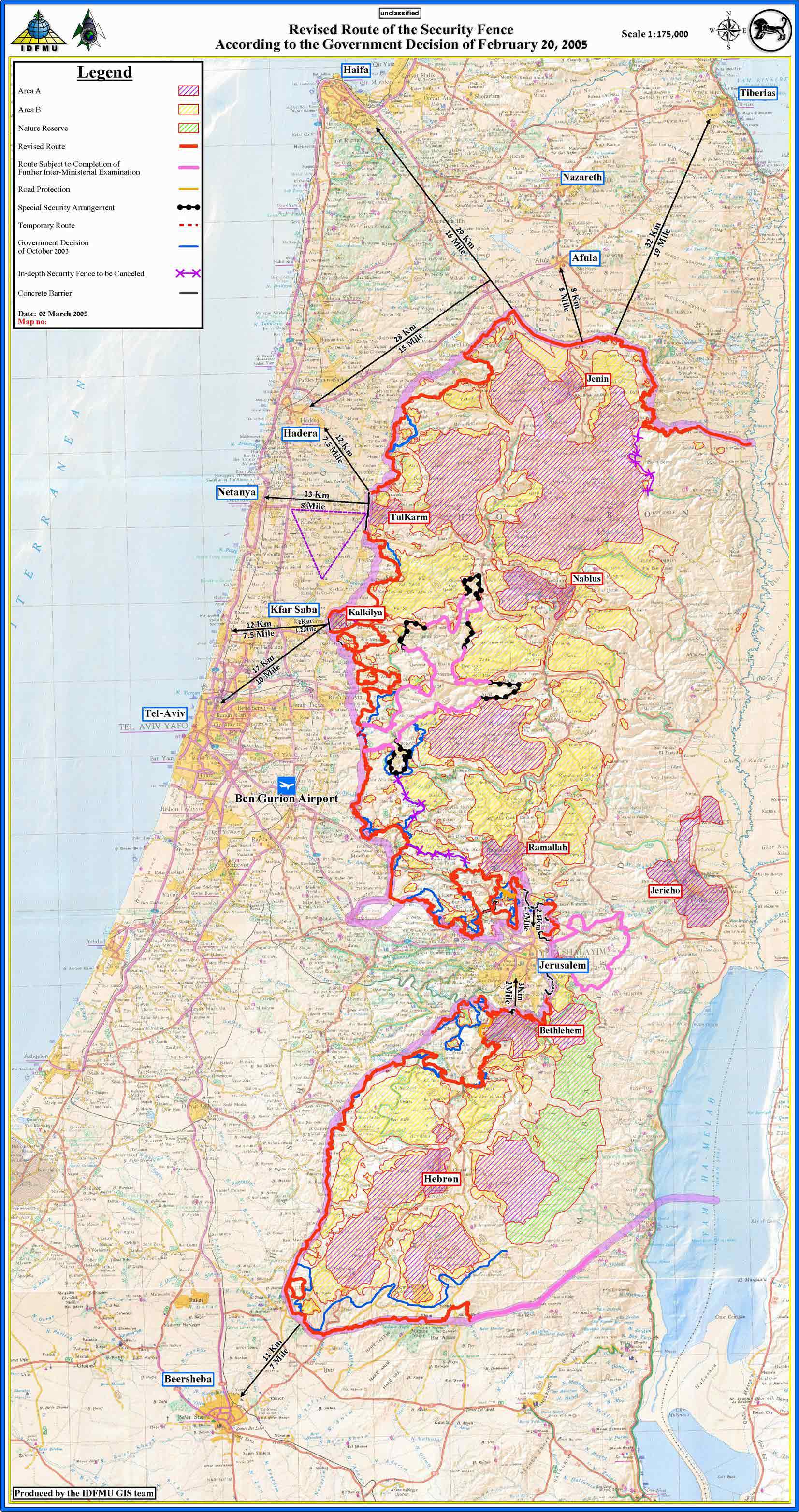The Israeli Wall that confines the Palestinians
The Israeli Wall that confines the
Palestinians
1992 - the idea of creating a physical barrier separating the
Israeli and Palestinian populations was proposed
1995, the Shahal commission was established to discuss how to implement a
separation barrier2000, Prime Minister Ehud Barak approved financing of a 74 km (46 mi) fence
2003, 180 km (112 mi) had been completed
2004, Israel started the southern part of the barrier.
International Court of Justice
2004 - The Court cited illegal interference by the
government of Israel with the Palestinian's national right to
self-determination; with the Palestinian's being subject to:
·
land confiscations,
·
house demolitions,
·
the
creation of enclaves, and
·
restrictions on movement and access to
o
water,
o
food,
o
education,
o
health care,
o
work, and
o
an adequate standard of living in
violation of Israel's obligations under international law.
2006, 362 km (224.9 mi) of the barrier had been
completed, 88 km (54.7 mi) was under construction
2012, 440 km (273.4 mi) (62%) of the barrier had been completed, 57 km (35.4 mi) (8%) was under construction
2012, 440 km (273.4 mi) (62%) of the barrier had been completed, 57 km (35.4 mi) (8%) was under construction
At a total length of 708 kilometers
(440 mi), the border traced by the barrier is more than double the length
of the Green Line, with 15% running along it or in Israel,
while the remaining 85% cuts at times 18 kilometers
(11 mi) deep into the West Bank,
isolating about 9% of it,
In a 2005 report, the United
Nations stated that:
... it is difficult to overstate the
humanitarian impact of the Barrier. The route inside the West Bank
severs communities, people's access to services, livelihoods and religious and
cultural amenities.
In addition, plans for
the Barrier's exact route and crossing points through it are often not fully
revealed until days before construction commences. This has led to considerable
anxiety amongst Palestinians about how their future lives will be impacted. ...
The land between the Barrier and the Green Line constitutes some
of the most fertile in the West Bank. It is currently the home for 49,400 West
Bank Palestinians living in 38 villages and towns
15 communities were to be directly affected, numbering about
138,593 Palestinians, including
13,450 refugee families, or 67,250 people. In addition to
loss of land,
in the city of Qalqilyah one-third
of the city's water wells lie on the other side of the barrier.
As of September 2013, there were 99 fixed checkpoints in the West Bank through which Palestinians must pass to move between towns..
Israel
decided in 2017 to begin construction of
a 40-mile fence around the Gaza strip with an
expected completion date of 2019. The barrier will be made of heavy concrete slabs reinforced with metal
rods that will extend deep underground. It will be equipped with sensors to monitor seismic changes.
Precedents
Israel already has fences along the frontiers with Lebanon, Syria, and Jordan, and this barrier to separate Israel from the Palestinians.
Israel already has fences along the frontiers with Lebanon, Syria, and Jordan, and this barrier to separate Israel from the Palestinians.






Comments
Post a Comment